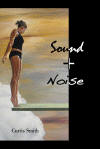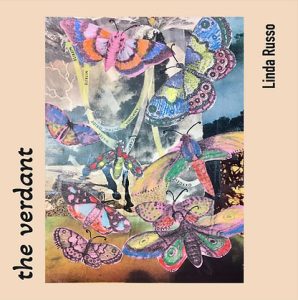Sound + Noise
Told in chapters which alternate viewpoints between its dual protagonists, the plot of Curtis Smith’s Sound + Noise is quieter than its title suggests – it is less the thrashing of a building cacophony than it is the last gentle notes of a favorite ballad. Tom and Jackie are both people with heavy pasts, the kind that refuse to let them move forward with their lives as fully as they might like until, little by little, they help each other to start again. Tom’s past is personified in the comatose person of his wife Karen, while Jackie’s is tied up in the past life she led as a backup singer for a famous country band. For each of them, part of what makes their pasts so daunting to overcome is that they love the lives they once led – Tom loves his wife, but from the very beginning it is obvious that she’s never going to awaken from her coma. Similarly, Jackie looks backwards from her new life as the owner of a local bar where she sings once a week, often covering the very band she was once a member of.
Told in chapters which alternate viewpoints between its dual protagonists, the plot of Curtis Smith’s Sound + Noise is quieter than its title suggests – it is less the thrashing of a building cacophony than it is the last gentle notes of a favorite ballad. Tom and Jackie are both people with heavy pasts, the kind that refuse to let them move forward with their lives as fully as they might like until, little by little, they help each other to start again. Tom’s past is personified in the comatose person of his wife Karen, while Jackie’s is tied up in the past life she led as a backup singer for a famous country band. For each of them, part of what makes their pasts so daunting to overcome is that they love the lives they once led – Tom loves his wife, but from the very beginning it is obvious that she’s never going to awaken from her coma. Similarly, Jackie looks backwards from her new life as the owner of a local bar where she sings once a week, often covering the very band she was once a member of.
Smith has a gift for description, a talent which comes in handy in a novel where much of the forward motion is contained in the slight actions and frequent volleys of dialogue that bounce between the small cast of characters. Despite the slim page length of the novel, there’s no chance that anyone will mistake Smith for a minimalist. Every room is highly detailed, their specifics carefully chosen for their abilities to function as either tells about a character or as meditative possibilities for Tom or Jackie to ruminate on, as in this early passage describing Jackie’s apartment:
Discarded clothes smother the handrails of Jackie’s treadmill – the highway of her life is strewn with the wreckage of good intentions. Sifting through the mess, she unearths the jeans that squeeze her hips. The striped pullover that makes her appear as though she has something to hide. The red blouse that accentuates the sag in her breasts. She thinks of all those years without a bra, her young girl’s belief that the laws of time and gravity didn’t apply to her. Pissed off and naked, she plunks down on the edge of her bed and lights a cigarette.
Smith’s characters are all possessed of a philosophical type of mind, given to the kind of thoughts that are as interesting as they are perhaps unlikely to actually occur. Leaving a concert, Jackie thinks, “there are hundreds, thousands of borders people construct around themselves, and maybe . . . the way to make sense of it all is to focus on one border at a time,” at the same time formulating the beginning of a philosophy that plays out over the rest of the chapter.
Many of the chapters are organized in a similar manner, each one a small argument fitted into the larger frame of the novel’s plot. Some of these are more successful than others, the lesser ones failing to carry off their arguments convincingly as fiction. These are too purposeful, too consciously constructed to pass as the natural movement of the story, and suffer for it. Which isn’t to say that they’re not interesting, as they often are. My criticism is instead how heavily the writer’s hand shows through here, where in other passages it is light and deft and highly skilled at teasing the characters’ inner lives from the detail and dialogue that surrounds them. Thankfully, the stronger passages are the more frequent, and generally Smith does a good job of letting his characters speak naturally instead of speaking for him.
In the end, Sound + Noise is a love story, and one that mimics real life in a way novels rarely do. This is not the epic love story of the modern movie, one full of stunning reversals and reveals, but instead a tale of quiet romanticism born out of the efforts of two people to be good and kind to each other, and to learn, after their own long periods of loss or disappointment, how to fall in love once again. This is a harder thing to depict well, but Smith does it wonderfully. Sound + Noise sets out to depict the series of everyday miracles it takes for two people to fall in love, and at that it succeeds without reservation.





